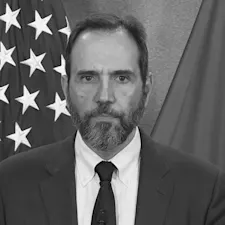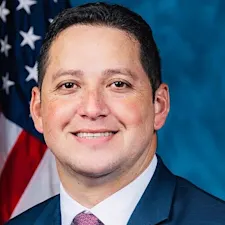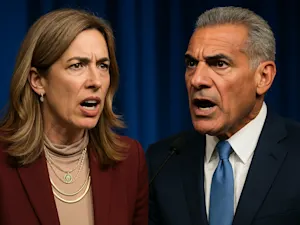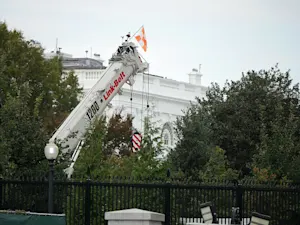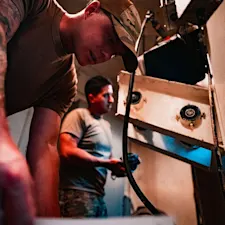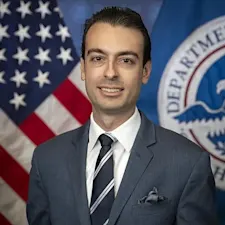
Shutdown Strains FAA: Fewer Controllers, More Delays, Rising Fear
A380 Quantas (QF93 at LAX), 2010. Photo courtesy of Moto "Club4AG" Miwa under CC BY 2.0.
The nation's skies are packed, but the people guiding the planes are stretched to the breaking point. With the government shutdown dragging into its fourth week, nearly 13,000 Federal Aviation Administration (FAA) air traffic controllers are working without pay, as reported by The Guardian. Reports indicate a significant rise in absences and sick calls, though exact numbers remain unspecified, leaving a skeleton crew to manage thousands of flights daily. The question on everyone's mind: Is flying still safe as this air traffic control crisis deepens?
A System Under Strain
Since the shutdown began, the FAA has reported at least 264 staffing shortages at its facilities, more than four times the number seen during the same period last year, as reported by CNN. Over this past weekend, more than 50 staffing shortages were recorded just since Friday, forcing delays from Los Angeles to Washington, DC. Flights at Los Angeles International Airport were temporarily halted due to a shortage at the Southern California TRACON, which handles arrivals and departures. Reagan National Airport in Arlington, Virginia, faced ground delays expected to last through the weekend.
Transportation Secretary Sean Duffy described the situation bluntly, saying controllers are "wearing thin" and calling in sick as they continue to work without pay for what he called difficult, complex jobs. "Just yesterday ... we had 22 staffing triggers," Duffy said on Fox News's "Sunday Morning Futures," calling it one of the highest levels of shortages since the shutdown began, as reported by CNN.
The Human Toll Behind the Screens
Air traffic controllers are essential workers required to be on the job despite the shutdown, but the lack of pay is taking a toll. Many are reportedly seeking second jobs to make ends meet, while others are burning out from mandatory overtime and six-day workweeks that predate the shutdown. The FAA is about 3,500 controllers short of its targeted staffing levels, as reported by The Guardian, a shortage worsened by the shutdown's halt to training programs at the FAA Academy in Oklahoma,
Chad Mourning, an aviation safety expert and assistant professor at Ohio University, warned that the shortage will only worsen as the shutdown continues. He explained that controllers can only work so much overtime before fatigue sets in, increasing the risk of errors. "The system self-corrects," Mourning said, "but expect delays, right? If you need to be somewhere on a deadline, maybe tell the people expecting you to wait," as reported by CNN.
Passengers Feel the Impact
Travelers are already experiencing the consequences. On a recent weekend, there were more than 6,000 flight delays in and out of the US, with 27% of American Airlines flights delayed, as reported by CNN. FlightAware, a flight tracking website, reported over 5,300 delays on one Saturday alone, with delays often above average since the shutdown began, as reported by The Guardian.
At Hartsfield-Jackson Atlanta International Airport, one of the busiest in the world, passengers expressed anxiety over the situation. Connie, a traveler, told CNN she was "flying today on sheer faith," while another passenger, Dylan Cousins, called for an end to the shutdown, saying, "There's a lot of things that need to get done and they need to figure out how to make that happen."
Safety: A Delicate Balance
Despite the staffing crisis, experts insist that flying remains safe, but the margin for error is razor-thin. Mourning pointed out that air traffic controllers manage close to 800,000 takeoffs and landings annually at just one airport, and their job requires hyper-vigilance, as reported by CNN. Unlike cars, planes cannot stop mid-air to avoid collisions, making the controllers' role critical to safety.
Dan Elwell, former FAA deputy administrator, who served during the 2019 shutdown, warned that the current situation is approaching a breaking point. He recalled that during the 2019 shutdown, the strain on controllers near the 25-day mark led to increased absences and flight disruptions, ultimately forcing the government to reopen, as reported by Fox News.
Elwell said he does not believe safety will be compromised but cautioned that the FAA will have to slow air traffic to maintain safety as more controllers call in sick. "The stress is too much," he said, emphasizing that controllers are "fantastic" but cannot keep going without pay indefinitely, as reported by Fox News.
Jake Rosenfeld, a sociology professor at Washington University in St. Louis who studies labor organizing, described air traffic controllers as "a very understaffed and overworked group of employees" even before the shutdown, as reported by CNN. Rosenfeld explained that federal law prohibits controllers from striking, so calling in sick is a workaround when tensions rise. Even a handful of absences at major airports can cause significant delays and safety concerns. "Air traffic controllers are a real linchpin in the economy and actions, even by a really small number of them, can cause real pains," he said.
The Quiet Crisis Behind the Scenes
The crisis is not just about numbers but the eerie calm in FAA facilities. Break rooms sit empty, and unpaid specialists guide packed skies with dwindling resources. The shutdown has forced thousands of federal employees to work without pay or be furloughed, including about 50,000 TSA officers, compounding the strain on the aviation system.
Dave Spero, president of the Professional Aviation Safety Specialists union, warned that every day the government remains shut down peels away another layer of safety, as reported by The Guardian. He called on Congress to reopen the government to restore training and staffing levels critical to modernizing the air traffic control system.
The Political Standoff and Its Toll
The shutdown began after lawmakers failed to reach a spending agreement, leaving the aviation system caught in a political stalemate. Republicans and Democrats remain deadlocked over budget priorities, including extensions of Affordable Care Act subsidies. The impasse has turned everyday air travel into an unspoken gamble, with passengers and controllers alike caught in the crossfire.
As the shutdown stretches on, the FAA faces a growing challenge: how to keep the skies safe when the people responsible for that safety are unpaid, exhausted, and increasingly absent. For travelers, the message is clear — expect delays and uncertainty. Although delays and staffing shortages have increased, the vast majority of flights continue to operate safely, and no major safety incidents have been directly linked to the shutdown so far.
The skies remain open, but the question lingers: how long can this fragile balance last?
References: Air traffic control staffing problems spiked over the weekend, raising concerns about growing disruption | US airports report over 20 air traffic controller shortage incidents in one day | US news | Government shutdown could cause more flight cancellations, delays, expert warns







